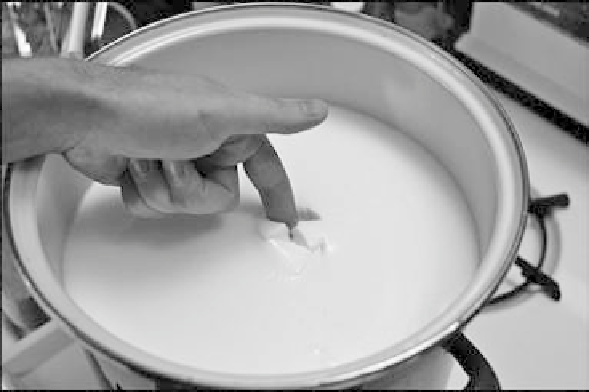Agriculture Reference
In-Depth Information
forms. Pasteurization neutralizes the calcium in milk too much for it to curd properly. (Doesn't
that tell you something about the benefits of unpasteurized milk in general?) Raw milk is your best
bet, though you do need to allow for extra curing time if you are unsure of the possibility of any
pathogens in it at all.
Because cheese making is a kind of fermentation, you need to control the bacteria and temperature
just as you do for yogurt. This requires a starter as yogurt does. Buttermilk and plain yogurt can
work, but depending on the type of cheese you want to make, you might need to purchase one or
grow a bacterial starter.
When the milk is acidic, the addition of rennet will change the consistency of the milk so that it
becomes a thick gel. Remember the casein reaction when we made yogurt? Rennet will intensify
that process even more. Casein, a milk protein, is water soluble. In acid, it is not. Because this
transformation causes such thickening, you need to make sure your milk and starter do not thicken
before the addition of rennet. Rennet can be purchased at grocery stores or from a cheese-making
supply house. Natural rennet comes from rennin, an enzyme in a young animal's stomach that
helps them digest their mother's milk. In theory, you can extract your own. It might be an
interesting undertaking, but I'm thinking a quick stop by the grocery store or a call to a supply
house will be just fine in most cases!
Inoculated milk with rennet stirred in should be left overnight, maintaining temperature control
much like you do with yogurt. By morning, the consistency should be completely gelled. You are
looking for what is called a “clean break.” A finger pressed into it and lifted out should break the
solids cleanly. What you have now are curds, and the liquid still in it is whey.
The milk should congeal to the point that it breaks cleanly around your finger.
(Photo courtesy of Brian Boucheron)














